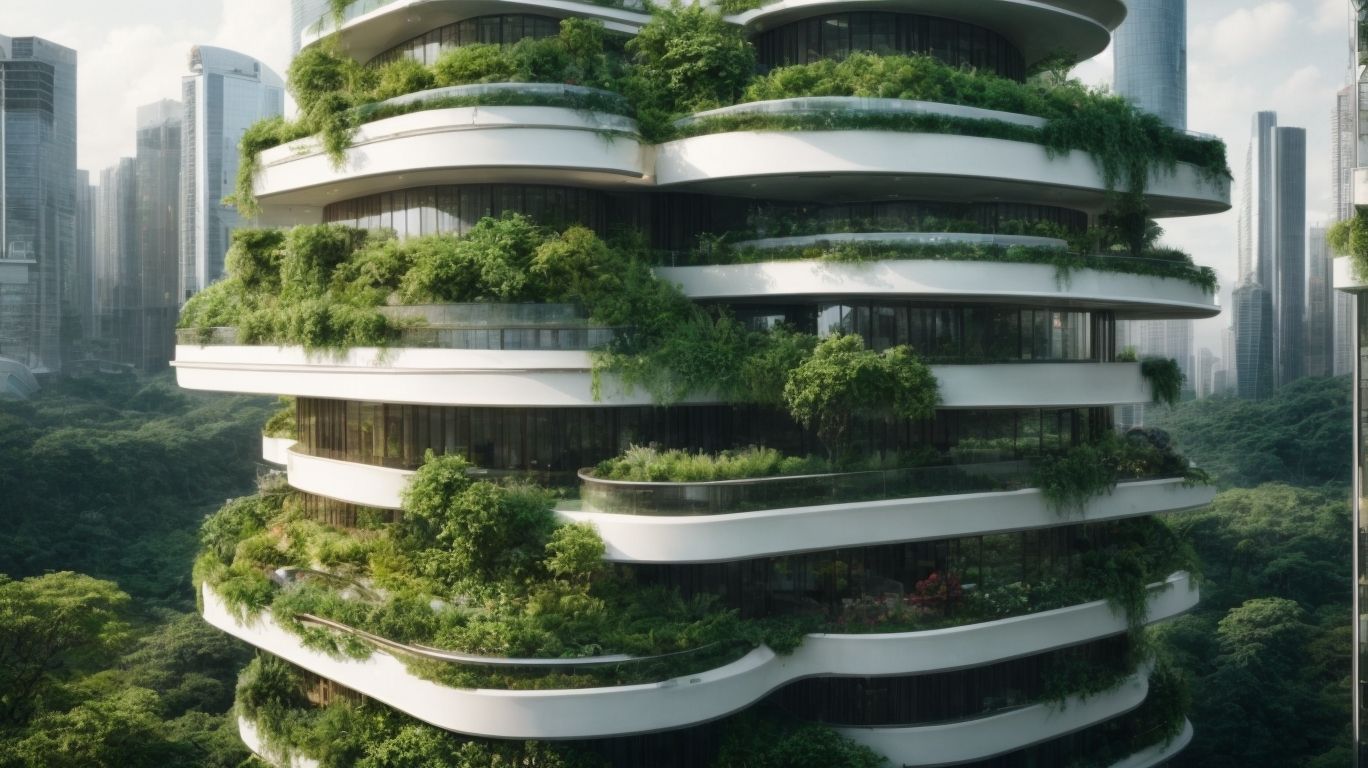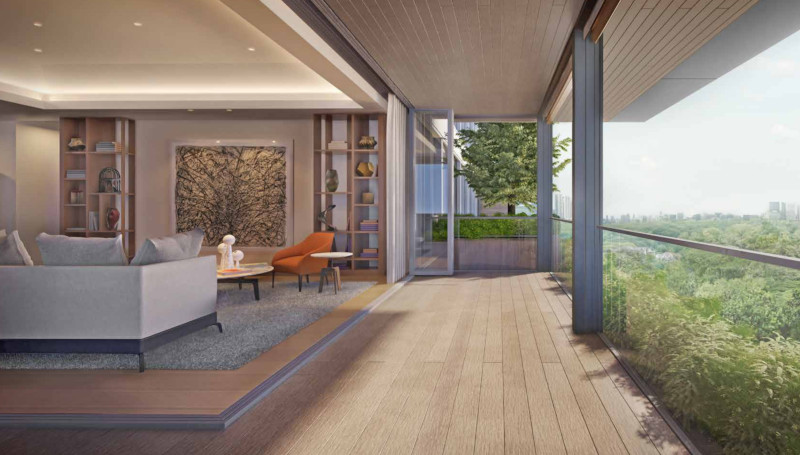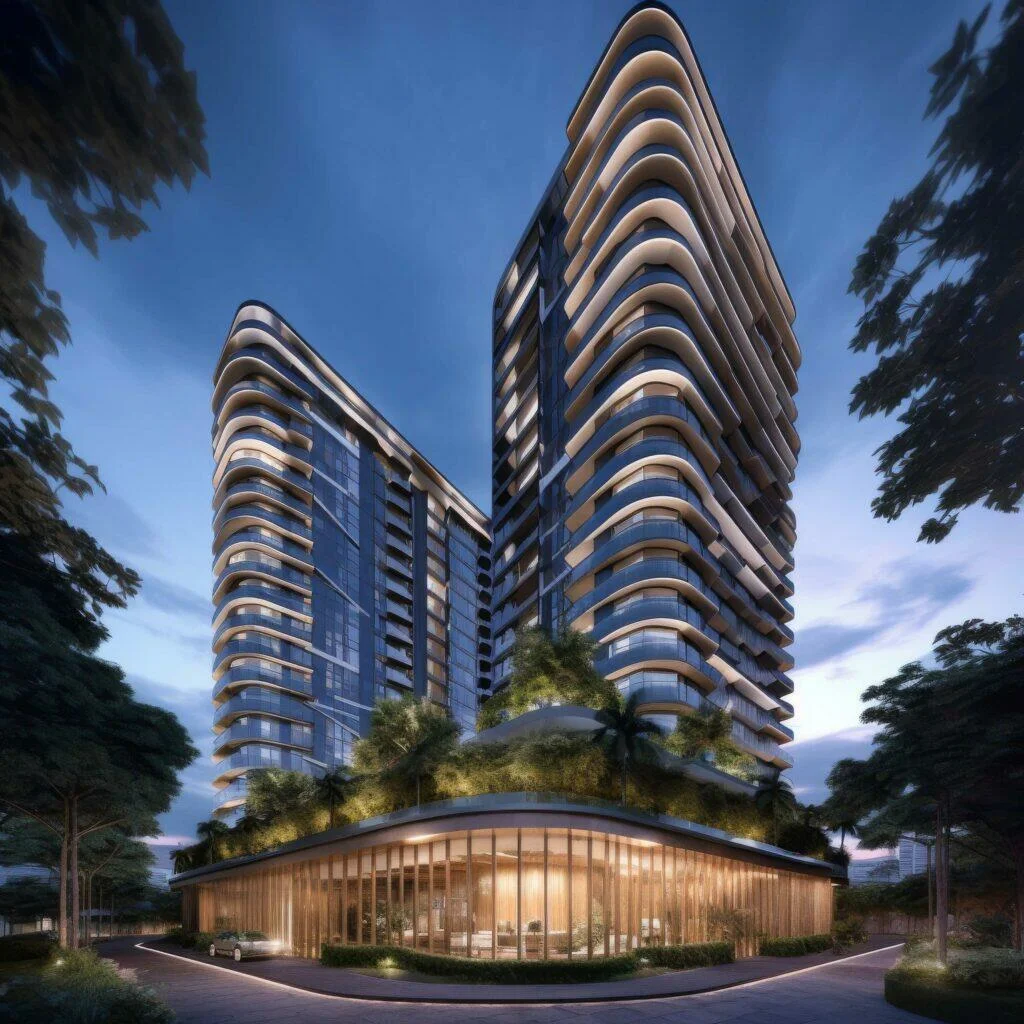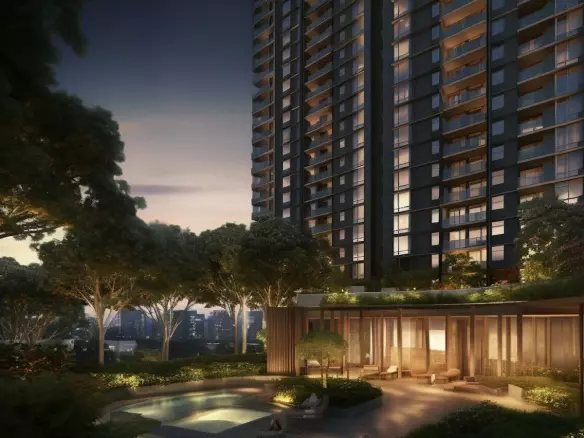
Are you ready to make a positive impact on our planet? Property development plays a major role in shaping our environment, and it’s crucial for developers to adopt sustainable practices. In this article, we’ll explore the importance of sustainable development and how it can benefit not only the environment but also your business.
What Are Sustainable Practices in Property Development?
Sustainable practices in property development are crucial for mitigating environmental impact and promoting long-term viability. These practices include:
- Implementing energy-efficient designs and technologies to reduce carbon emissions.
- Utilizing sustainable building materials to minimize waste and preserve resources.
- Implementing strategies for water conservation, such as rainwater harvesting and efficient irrigation systems.
- Promoting biodiversity by incorporating green spaces and native vegetation.
- Adopting waste management initiatives, including recycling and composting.
- Engaging in community outreach and collaboration to ensure social sustainability.
Pro-tip: When researching property developers, be on the lookout for certifications like LEED or BREEAM, which demonstrate a strong commitment to sustainable practices in property development.
Why Is Sustainable Development Important in Property Development?
The importance of sustainable development in property development cannot be overstated. It serves multiple purposes, including promoting environmental conservation and minimizing negative impacts on ecosystems and natural resources. Additionally, it encourages the efficient use of energy and water resources, leading to cost savings for both property owners and occupants. Furthermore, adopting sustainable practices can enhance a property developer’s reputation and create marketing opportunities. Most importantly, sustainable development improves the overall quality of life for occupants by providing healthier and more comfortable living spaces. Given these reasons, property developers prioritize sustainable practices to make a positive impact on the environment and meet the increasing demand for eco-friendly properties.
What Are the Key Factors to Consider in Sustainable Property Development?
Sustainable property development is becoming increasingly important in today’s world. As we strive to reduce our impact on the environment, property developers are looking for ways to create buildings and communities that are environmentally responsible and socially conscious. In this section, we will discuss the key factors that property developers must consider when incorporating sustainable practices into their projects. These include energy efficiency, water conservation, the use of sustainable materials, and proper waste management. By understanding and implementing these factors, developers can create sustainable properties that benefit both the environment and the community.
1. Energy Efficiency
Energy efficiency is a crucial element in the development of sustainable properties. By optimizing energy usage, developers can not only reduce environmental impact but also lower operational costs.
Here are the steps to take in order to improve energy efficiency:
- Conduct an energy audit to identify areas for improvement.
- Install energy-efficient lighting, appliances, and HVAC systems.
- Maximize natural lighting and ventilation through strategic design and window placement.
- Improve insulation to minimize heat loss or gain.
- Utilize renewable energy sources, such as solar panels or geothermal systems.
Fact: Buildings consume approximately 40% of the world’s total energy, highlighting the importance of energy efficiency in sustainable development.
2. Water Conservation
Water conservation is a crucial aspect of sustainable property development. By implementing water-saving practices, developers can reduce water usage, minimize strain on local water sources, and promote a more environmentally-friendly approach.
To effectively conserve water, here are some steps to consider:
- Install low-flow fixtures and faucets to reduce water consumption.
- Implement rainwater harvesting systems to collect and reuse rainwater for landscaping and non-potable uses.
- Use drought-resistant plants and native landscaping to minimize water requirements.
- Monitor and repair leaks promptly to prevent water wastage.
- Implement smart irrigation systems that adjust watering schedules based on weather conditions and soil moisture levels.
By incorporating these water conservation measures, property developers can contribute to sustainable water management and create more resilient and eco-friendly communities.
3. Use of Sustainable Materials
The incorporation of sustainable materials is vital in property development for reducing environmental impact and promoting long-term sustainability. To successfully incorporate sustainable materials, developers should follow these steps:
- Conduct thorough research to identify suitable sustainable material options.
- Select materials that are renewable, recyclable, or made from recycled content.
- Consider materials with low embodied energy and a low carbon footprint.
- Prioritize locally sourced materials to reduce emissions from transportation.
- Choose materials with a long lifespan and minimal maintenance requirements.
- Ensure materials are non-toxic and promote healthy indoor air quality.
- Implement proper waste management practices during construction and demolition.
- Collaborate with suppliers and contractors who prioritize sustainability.
- Monitor and document the use of sustainable materials for certification and reporting purposes.
By incorporating sustainable materials, property developers can make a positive impact on the environment and contribute to a greener and more sustainable built environment.
4. Waste Management
Effective waste management is crucial in sustainable property development to minimize environmental impact and promote resource efficiency.
- Reduce waste generation by implementing strategies such as recycling programs, composting, and source reduction.
- Separate waste streams to ensure proper disposal and recycling of different materials, including plastics, paper, glass, and metals.
- Implement waste-to-energy systems to convert non-recyclable waste into renewable energy sources.
- Encourage tenants and occupants to participate in waste management efforts through education and awareness campaigns, including the 4. Waste Management initiative.
- Collaborate with local communities and organizations to develop recycling and waste management initiatives.
What Are Some Examples of Sustainable Practices in Property Development?
Property developers play a crucial role in promoting sustainable practices in the construction and management of buildings. In this section, we will explore some examples of sustainable practices that property developers may adopt in their projects. From obtaining green building certifications to utilizing renewable energy sources, we will discuss the various ways in which developers can incorporate sustainability into their developments. Additionally, we will also touch upon the importance of implementing rainwater harvesting systems and providing sustainable transportation options for future residents.
1. Green Building Certification
Green building certification is a crucial step in sustainable property development. Achieving green building certification involves following a set of guidelines and standards to ensure the environmental performance of a building. Here are the steps to obtain green building certification:
- Research: Understand the different available programs for green building certification, such as LEED or BREEAM.
- Planning: Incorporate sustainable design principles into the concept and layout of the building.
- Materials: Source and utilize environmentally friendly materials with a low carbon footprint and high recyclability.
- Energy Efficiency: Implement energy-efficient systems and technologies to decrease energy consumption.
- Water Conservation: Install water-efficient fixtures and utilize rainwater harvesting systems.
- Indoor Environmental Quality: Focus on enhancing indoor air quality and occupant comfort.
- Site Sustainability: Optimize site selection, landscaping, and transportation options to minimize environmental impact.
- Documentation: Collect and submit all necessary documentation to demonstrate compliance with certification requirements.
- Verification: Engage a third-party assessor to verify compliance and award the green building certification.
2. Use of Renewable Energy Sources
The use of renewable energy sources is a crucial aspect of sustainable property development. Incorporating renewable energy helps reduce reliance on fossil fuels and decreases greenhouse gas emissions. Here are some steps to consider:
- Conduct an energy audit to determine energy consumption and identify areas for improvement.
- Install solar panels or wind turbines to generate clean, renewable energy on-site.
- Implement energy-efficient technologies and practices, such as LED lighting and smart energy management systems.
- Utilize geothermal heating and cooling systems to harness the Earth’s natural heat.
- Promote energy conservation among occupants through education and awareness programs.
The world’s first major renewable energy power station was built in 1895 in El Salto, Mexico. The station used a hydroelectric turbine to generate electricity from flowing water, providing sustainable energy to nearby towns.
3. Implementation of Rainwater Harvesting Systems
Implementing rainwater harvesting systems in property development is a crucial step towards sustainability. Here are the steps involved in the process:
- Assess the property: Determine the size and layout of the property to identify suitable areas for rainwater collection.
- Design the system: Work with experts to design a system that can efficiently capture and store rainwater.
- Install collection infrastructure: Set up gutters, downpipes, and filters to direct rainwater to storage tanks or underground reservoirs.
- Integrate treatment mechanisms: Install filters and disinfection systems to ensure the collected rainwater is safe for various applications.
- Utilize the harvested water: Connect the stored rainwater to different applications such as irrigation, toilet flushing, or laundry.
- Maintain and monitor: Regularly inspect and clean the system to ensure optimal performance and prevent any potential issues.
The implementation of rainwater harvesting systems has proven to be a game-changer in sustainable property development. For example, in Chennai, India, a residential complex named Olive Springs successfully implemented a rainwater harvesting system. As a result, they reduced their dependence on municipal water supply by 50%, contributing to water conservation efforts in the city. This initiative not only benefited the residents but also inspired neighboring communities to follow suit.
4. Incorporation of Sustainable Transportation Options
Incorporating sustainable transportation options into property development projects is crucial for reducing carbon emissions and promoting eco-friendly lifestyles. Here are some steps to consider:
- Provide designated bike lanes and secure bike storage facilities.
- Install electric vehicle charging stations to encourage the use of electric cars.
- Promote carpooling and ridesharing programs to reduce the number of vehicles on the road.
- Integrate public transportation systems, such as bus stops or train stations, within the property’s vicinity.
By incorporating sustainable transportation options, property developers can contribute to a greener environment and offer residents convenient and eco-friendly commuting alternatives.
What Are the Benefits of Adopting Sustainable Practices in Property Development?
In today’s world, sustainability has become a crucial consideration in all industries, including property development. Property developers who adopt sustainable practices not only contribute to a more eco-friendly future but also reap various benefits. In this section, we will explore the advantages of implementing sustainable practices in property development, including cost savings, enhanced reputation and marketing opportunities, improved quality of life for occupants, and a positive impact on the environment. These benefits not only benefit the developers but also the community and the planet as a whole.
1. Cost Savings
Implementing sustainable practices in property development can lead to significant cost savings in the long run. Here are some steps that property developers can take to achieve cost savings:
- Invest in energy-efficient technologies and appliances to reduce electricity consumption and ultimately save on energy costs.
- Install water-saving fixtures and implement water management systems to minimize water usage and save on water costs.
- Choose sustainable materials that are durable and require less maintenance, leading to long-term cost savings.
- Implement effective waste management strategies such as recycling and composting to reduce disposal costs and promote sustainability.
Fact: According to a study by the World Green Building Council, incorporating green practices in building design can result in cost savings of up to 8% in operating costs.
2. Enhanced Reputation and Marketing Opportunities
Enhancing reputation and marketing opportunities in sustainable property development can be achieved through various steps:
- Obtain green building certifications like LEED or BREEAM to showcase commitment to sustainability.
- Create a compelling sustainability narrative to communicate the eco-friendly features and benefits of the property, thus enhancing its reputation and marketing opportunities.
- Highlight energy-saving measures and renewable energy sources used in the development to attract environmentally conscious customers.
- Implement sustainable transportation options, such as electric vehicle charging stations or bike-sharing programs, to appeal to eco-friendly commuters.
- Showcase the use of sustainable materials and construction techniques to demonstrate commitment to reducing environmental impact.
- Engage in community outreach and partnerships to build a positive reputation and demonstrate social responsibility.
- Utilize digital marketing strategies to reach a wider audience and promote the property’s sustainable features.
3. Improved Quality of Life for Occupants
Improving the well-being of occupants is a crucial aspect of sustainable property development. This can be achieved through the following steps:
- Designing buildings with ample natural light and ventilation to enhance overall quality of life.
- Creating green spaces and communal areas for relaxation and social interaction.
- Implementing energy-efficient systems to reduce utility costs and promote a comfortable living environment.
- Using sustainable materials that are non-toxic and promote indoor air quality.
- Providing access to amenities such as gyms, bike storage, and green transportation options.
In a sustainable housing project, occupants reported improved mental and physical health due to the abundance of natural light, access to green spaces, and reduced energy expenses. This demonstrates how sustainable practices can positively impact the quality of life for residents.
4. Positive Impact on the Environment
A sustainable property development can have a positive impact on the environment by implementing various practices. These include:
- Energy-efficient design and installation of renewable energy sources like solar panels.
- Water conservation through the use of efficient fixtures, rainwater harvesting systems, and graywater recycling.
- Using sustainable materials that are eco-friendly and have low carbon footprints.
- Implementing effective waste management strategies, such as recycling and composting, which not only benefit the environment but also reduce greenhouse gas emissions.
- Promoting sustainable transportation options like bike lanes, electric vehicle charging stations, and access to public transportation, which helps to reduce carbon emissions and conserve resources.
By adopting these practices, property developers contribute to reducing greenhouse gas emissions, conserving resources, and protecting the environment for future generations. Overall, the positive impact on the environment is significant and essential for ensuring a sustainable future.








